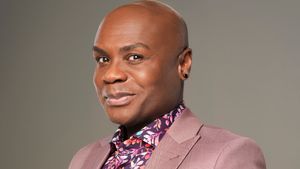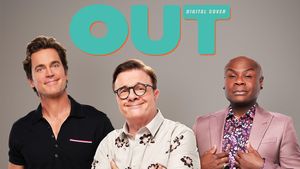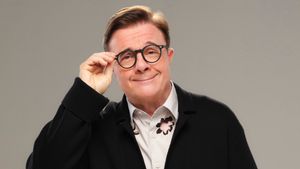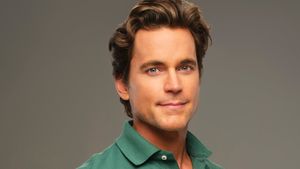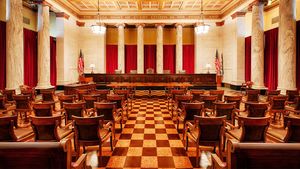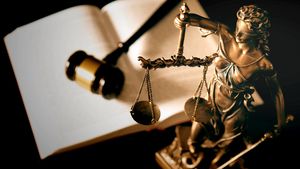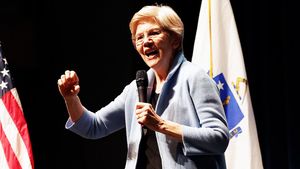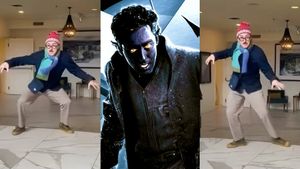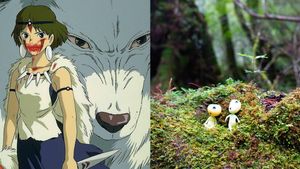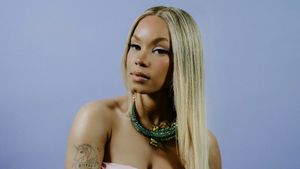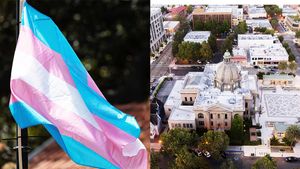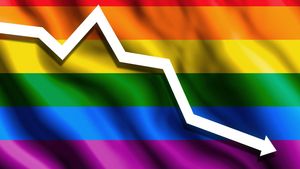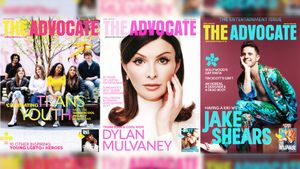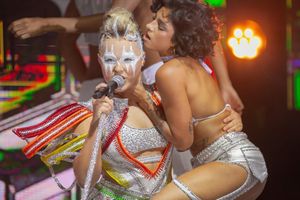It's officially Bisexual Awareness Week (or simply #BiWeek, for short), and now is the perfect time to catch up on some bi-centric literature!
I compiled a list of 22 fantastic pieces of content on bisexuality. The collection includes everything from identity pieces to academic papers and interviews to fiction and they're all focused on providing an accurate depiction of bisexuality.
Let's get started!
1. Kenji Yoshino, “The Epistemic Contract of Bisexual Erasure” (2000)
Probably the most exhaustive and important work I’ve read on bisexual erasure in my lifetime. While it’s the length of a novella (~56,000 words), it’s written very clearly, and you can read it in two days. His thesis can be summarized as such: Both gays and straights have an implicit agreement to erase bisexuals as it benefits them both.
Gay folks, while stigmatized, still have an investment in erasing bisexuals. He then spends the rest of the article illustrating how it helps both gay and straight communities to erase bisexuals, and how, even without directly stating anything, these communities are working together.
2. Emily Alpert, “Why Bisexuals Stay in the Closet” (2014)
This Los Angeles Times piece delves into the reasons why so many bisexuals stay closeted, and how our experience of oppression makes it difficult for us to come out to both our gay and straight peers.
3. Lachlan MacDowall, “Historicizing Contemporary Bisexuality” (2009)
Published in the Journal of Bisexuality, this piece explores the history and evolution of modern bisexuality. I’ll let the abstract speak for the piece, “Contemporary bisexuality has a distinctively modern history that begins in the middle of the 19th century and develops through a matrix of three interconnected definitions, as combinations of biological, psychical, and sexual categories: male/female, masculine/feminine, and heterosexual/homosexual.
Due in part to bisexuality’s marginality in theories of sexuality, recent theorisations of bisexuality have often been reluctant to historicize the category of bisexuality itself. However, bisexuality’s origins in the 19th century, particularly its relation to Darwinism and theories of evolution, continue to shape how it is articulated in the early 21st century.”
4. Zachary Zane, “Revealing Research on Why Many Bisexual Men Don’t Come Out” (2016)
Dr. Eric Scrimshaw, of Columbia University’s Mailman School of Public Health, recently conducted a qualitative study where he interviewed 203 closeted bisexual men to further explore the reasons why so many bisexual men are afraid of coming out to their female partners.
What his research revealed was that most bisexual men aren't confused about being bi. They fear stigma from their female partners. They fear that they won’t believe them or that if they do believe them, they subsequently won’t date them.
5. Esther Rapoport, “Bisexuality in Psychoanalytic Theory: Interpreting the Resistance” (2009)
While there have has been a plethora of research on gay/lesbian identities as well as a number of psychoanalytic theories that surround issues of gayness, bisexuality has been relatively left out of psychoanalytic theory. This is important because it influences how therapists and doctors help bisexual men and women. This piece explores the blindspots of psychoanalytic theory and how that contributes to bi-erasure.
6. Jane Ward, “Not Gay: Sex Between Straight White Men” (2015)
This highly controversial book is worth the read. Regardless if you agree or disagree with her premise, Jane Ward’s novel sheds light onto how masculinity, straightness, and whiteness, are performed through same-sex sexual acts in hypermasculine spaces like fraternities and the military.
7. Zachary Zane, “Bisexuals, Passing, and Straight Privilege: A Deeper Look” (2016)
While bisexuals can pass as straight, that doesn’t make us any less a part of the queer community. Passing is a complex concept, and one that many bisexuals wish they didn’t have. This Huffington Post piece explores some of the pros and cons of passing for bisexuals, and the effect that passing has on bisexual identity.
8. Camille Beredjick, “Here’s What No One Ever Tells you About Bisexuality” (2015)
This piece explores how bisexual identity can evolve over time, and that doesn’t make you any more or less bisexual. It also doesn’t mean that bisexuality is simply a phase. Identity is a journey. It’s not a stagnant entity.
9. Kim Parker, “Among LGBT Americans, bisexuals stand out when it comes to identity, acceptance” (2015)
This piece reports recent Pew Research that explores the number of bisexuals in different-sex relationships, as well as the importance bisexuality plays in identity.
10. Eliel Cruz, “Why I Claim Bisexuality” (2015)
There are a number of sexually fluid identity labels, such as pansexual, polysexual, omnisexual, and queer. So why is it that some of us claim bisexuality as our label as opposed to another label? Eliel Cruz explores that question.
11. Zachary Zane, “I Can’t Help It: I Love Being Fetishized as a Bisexual Man” (2015)
This piece, originally published in the Huffington Post, explores the irony of fetishization for bisexual men. When so many people won’t date you because you’re bisexual, what do you do with the people who want to date you only because you’re bisexual?
12. Ginny Brown, “Bi Erasure in the Polyamorous Community Totally Happens – Here’s How” (2016)
Polyamorous communities are supposed to be a safe space for bisexuality. A space that’s particularly accepting and mindful of bisexuals. However, in practice, this is often not the case. This piece is my favorite piece I’ve ever read regarding the nature of bisexual erasure in polyamorous spaces.
13. Zachary Zane, “I Can’t Give Blood and Neither Can the Women I’ve Slept With” (2016)
The FDA still prohibits bisexual men and all the women with whom they’ve slept to donate blood. This piece explores the blatant biphobia and homophobia that guides this policy.
14. Robyn Ochs, “Getting Bi: Voice of Bisexuals Around the World” (2002) and Robyn Ochs and Dr. Herukhuti (H. Sharif Williams) “RECOGNIZE: The Voices of Bisexual Men — An Anthology” (2014)
Robyn Ochs and Dr. Herukhuti (H. Sharif Williams) have repeatedly created various platforms to share the voices of bisexual men and women who are not represented in mainstream media. This compilation of bisexual identity pieces reveals the many faces and experiences that people have with bisexuality.
15. Zachary Zane, “Q&A: Bisexual Activist Robyn Ochs On Bi-visibility, Erasure, and the Future of The Bi+ Movement” (2016)
This Huffington Post interview with renown bisexual activist Robyn Ochs provides an in-depth look at the struggles facing modern day bisexuality. Additionally, Robyn discusses where she thinks the future of the bisexual movement is heading.
16. Dr. Maria Pallotta-Chiarolli, “Women in Relationships with Bisexual Men: Bi Men by Women” (2016)
Maria’s new book discusses the benefits and troubles of being a woman dating a bisexual man. In it, she reveals the good, the bad, and the ugly. However, she also mentions that many women prefer dating out bisexual men, as they make better partners, husbands, and fathers, and lovers.
17. James Baldwin, “Giovanni’s Room” (1956)
Baldwin’s classic Giovanni’s Room offers a nuanced and realistic depiction of bisexuality. Not only that, the novel explores queer everyday experiences like social isolation, passing privilege, masculinity, self-loathing and temptation.
18. Zachary Zane, “Why I Don’t Like Being Asked Which Gender I Prefer” (2016)
This piece dispels the idea that to be truly bisexual, you must like both men and women equally all the time. You must be “50/50.” That’s simply not how bisexuality works, and just because you don’t like men and women to the same degree, doesn't mean you’re any less bisexual.
19. Fritz Klein, “The Bisexual Option” (1978)
The late Dr. Klein was a psychologist, and years ago he published The Bisexual Option, which explores the conversations he had with his bisexual patients. He explores how bisexuality can enhance your identity, or when you’re in denial, affect your personality in negative manners.
20. Alfred Kinsey, “The Kinsey Reports” (1948/1953)
I’m sure you’ve heard of the Kinsey Reports, but have you read them? They’re worth skimming. It in, Dr. Kinsey explores how most men and women aren't “strictly” gay or straight but are somewhere along a spectrum. Kinsey was the first to popularize this idea that sexual orientation isn’t binary, but rather a spectrum.
21. Zachary Zane, “Why Coming Out as Bisexual is Perpetually Exhausting” (2015)
Bisexuals need to repeatedly come out, especially when they’re in a relationship with someone (regardless of their partner’s gender). This piece explores the fatigue and emotional turmoil that occurs from constantly being re-closeted with every new individual you meet.
22. Benoit Denizet-Lewis, “The Scientific Quest to Prove that Bisexuality Exists” (2014)
This New York Times article speaks with various activists on the board of the American Institute of Bisexuality (AIB), detailing the work that they’re doing for the bi community: increasing visibility, creating more bi spaces, dispelling negative stereotypes, and using science to enhance knowledge of bisexual identity.











































